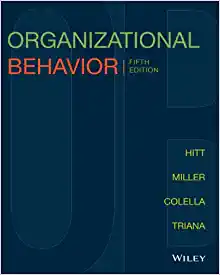Learners will recognize some version of the phrase, I am placing my future in your hands .
Question:
Learners will recognize some version of the phrase, “I am placing my future in your hands.” This exercise symbolizes an ethical reality of what it means to be a leader. Those who choose to follow, rather than to go by their own direction are, for that moment, placing the outcome in the leader’s hands. The higher the level of formal leadership in an organization, the more people are placing their futures in the hands of the leader. Jeffrey Immelt, CEO of General Electric, with over 300,000 employees worldwide, has quite a handful! Yet, his acts of leadership, successful or failed, do change the future course of events for those thousands of employees and many thousand GE stakeholders. Whether one follower or hundreds of thousands, what is in the leader’s hands is something ineffably precious—how peoples’ lives turn out.
Questions:
1. Distribute blank sheets of paper to all learners.
2. Their purpose is to fill this paper with words, short phrases, and drawings that represent their hopes for the future (from the next few hours to long-range career goals).
3. Now, have them stand and gather in an open space and form pairs. If there is an odd number, form triads to give everyone a role.
4. The first task is for each pair to choose a leader. Pose this question: If only one of you could take the lead in making this exercise a valuable lesson in the ethics of being a leader, who shall it be?
5. Once all pairs have a leader, ask the follower to place the paper—with their future hopes—in the hands of the leader.
6. Leaders will read what their followers give to them and seek clarification of anything that is not immediately understandable. Then, the two (or three) will discuss this main question (still standing and facing each other): Is it possible that being this person’s leader for even the few minutes of this exercise can alter the future represented on this piece of paper?
7. Next, ask the pairs to switch leader-follower responsibilities. The former leader will now place her or his paper in the hands of the next leader. After reading and clarifying what is there, the pair will discuss this question: What can I say and do right now to assure you that any time during the rest of this course, if it happens that I become your leader, I will remember to share a concern for this future?
8. If time allows, you may extend the symbolism of this exercise.
a. Have the pairs face each other with each other’s future sheets in their hands. Instruct them, on the count of three, to crumple that paper, maintaining eye contact, and toss the balled paper on the floor. Have them discuss this: How is the breach of trust this rude act represents like a moment when a leader who held your future in her or his hands dashed your hopes?
b. Have them stand with their future papers in their own hands. Upon your signal, have them roam the room, until they choose a person into whose hands they will place their futures (for the moment). Some may not be able to choose a leader. Some will. Once the action stops, have learners look at what has transpired, and discuss this question: What does this mean?
c. You make an arbitrary (and random) choice of three leaders and tell them to go to different corners of the room. Then, you have the rest count off in threes; each student is then required to go to leader 1, 2, or 3 according to their number. They are to place their future paper in the hands of leaders chosen by a “higher authority.” Ask them to discuss this question: Do we feel differently about placing our futures in the hands of those whom we did not choose to lead us?
Step by Step Answer:






